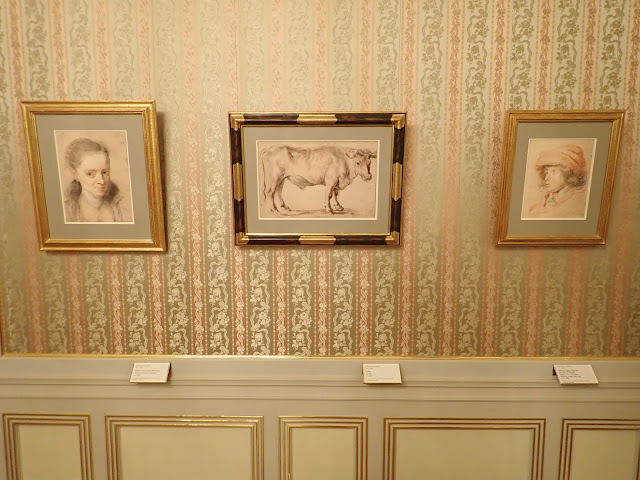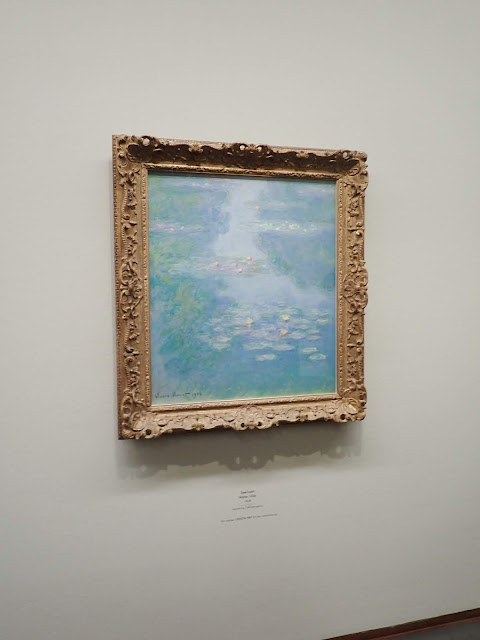Vienna, Austria (Part II) - The Culture
The mighty Holy Roman Empire was a collection of German speaking countries and principalities that banded together into a confederation. For centuries, the Holy Roman Empire was ruled by the powerful Hapsburg Empire. While the Hapsburg's main residence was the Hofburg in the center of Vienna, you can't expect them to spend the whole year in just one palace can you? Of course not. So they did what any reasonable family would do. They built a 1,400 room palace about five miles away so they could summer somewhere else. Schönbrunn Palace is one of the most stunning of all of the European palaces, and could easily take days to go through. When you get there you can't just walk in, you get assigned an entrance time to keep the foot traffic in the palace manageable. We walked right to the front of ticket line with our Vienna Pass, got our assigned entrance time, and then went to lunch while we waited to enter. The palace was originally a hunting lodge for the Hapsburgs, but under Empress Maria Theresa the palace was overhauled in the mid-18th Century. Sadly, and understandably, they don't let you take pictures when you are inside the palace. While you don't get to see all 1,400 rooms, you do get to see about 1,300 less than that. The rooms are immaculate, and further demonstrate that unrealistic lifestyle these monarchs lived under. Outside are the famed gardens of the palace, which have numerous fountains, statues, and even some mazes. Walking around the gardens you will see what has to be one of the oldest greenhouses in the world. This massive building, called the Palm House (oh does your greenhouse not have a name?), was built in the 19th Century, and houses plants from all around the world. It's amazing that they were able to transport these plants from across the world to the center of Europe one hundred and fifty years ago. Behind the greenhouse is the Tiergarten Schönbrunn, the once private zoo that belonged to the emperors, but now is the city zoo. While not a massive zoo like other cities have, it is certainly the most regal zoo we've ever visited. They have all the elephants, giraffes, and tigers any visitor could love, and are completely housed in Victorian era buildings. If you have time, wander over to the Carriage Museum. It's more fun than it sounds. They have many of the former imperial carriages. You can see that opulence wasn't just limited to the home. They have the hearse carriages for several of the former emperors, and even the famous Empress Sisi. If you go in the winter, you will get to enjoy the Christmas market in front of the palace. Complete with a fifty foot Christmas tree and carolers, you can spend the entire night there eating, drinking, and hanging out, which is what many of the locals do with their nights.
While it feels like every city in Europe has their own art museum, few cities are as meaningful to the art of Europe than Vienna. Like Florence and Paris, Vienna became an mecca for artists from all across Europe. The Hapsburg Empire, and the wealthy nobles around them, funded an explosion of art for centuries. Vienna is overflowing with art museums. One article I read claimed there were over 100 art museums in the city, and I can believe it. Wendy and I visited several of them, and the two we enjoyed the most were the Belvedere Palace and the Albertina. Both of these palaces were once the grand estates of powerful men, and they built homes that rivaled the emperors they served. The Belvedere was once the home of Prince Eugene of Savoy, one of the great military heroes of the 17th & 18th Centuries. The home has housed the Imperial art collection since 1776, with a brief pause in the early 20th Century after the famed Franz Ferdinand made it his own home. The palace itself is almost too much to believe. There are actually two palaces on the grounds, the Upper and Lower Belvedere. Inside you will see some of the most stunning works you could ever imagine. Most of the people come to see the work of Gustav Klimt, including his famous painting The Kiss. I was more impressed with the Romatic works. I have always been a fan of the Romantic movement in art, and I was not disappointed. I turned the corner of one gallery only to find the most famous painting of Napoleon Bonaparte ever, "Napoleon Crossing the Alps," by Jacques-Louis David. My absolute favorite artist is Caspar David Friedrich. I can spot his work from across a room, and I found one of his works called "Rocky Landscape in the Elbe Sandstone Mountains." There are other types of work there too, including some very odd busts of two men after these men had just been hanged. If that's not your thing, how about babies surveying a railroad? The Belvedere was amazing, and again, if you visit in the winter you can visit the small Christmas market they have in the garden.
There are few places in the world that stand out as the historic benchmark for what any other similar location should strive to be like. The Louvre is arguably the premier art museum in the world, the British Museum is probably the leading history museum in the world (although the American in me believes the Smithsonian is its equal), and the Vienna Opera House is that place for music lovers around the Europe. The Vienna Opera House has such a famous reputation you would believe it's been around for hundreds of years, but that's not quite true. Built in 1869, this is another example of the opulence of Vienna. The massive Victorian era building sits at the heart of the Altstadt, and puts on live shows every night. Do you want to know how I know they put on live shows every night? Just ask one of the several hundred young men who are roaming around the tourist district trying to sell you tickets to a show. While it is suspicious to travelers, they are actually legitimate tickets vendors, and they are all dressed like a coachman from a 19th Century horse carriage. The Vienna Opera House is beautiful on the interior. The levels of private boxes just keep rising from the ground and make you wonder what anyone at the top can actually see. There is a standing room only section in the back that people can pay to get into for cut rate prices. The downside to that is they have to stand in line for hours before the show with no guarantee of getting in, and have to stand for 3-4 hours of performances. The opera itself was an experience. The night we went we saw Die Zauberflöte, or the Magic Flute, by the famous composer Wolfgang Amadeus Mozart. Musically impressive, I believe Herr Mozart and his friends may have been sniffing some 18th Century stimulants when they composed this piece. This opera is supposed to reflect the intellectual movement of the Enlightenment, and reject the Catholic views of the Holy Roman Empire. It may have been difficult to pick up because of the language barrier, but it felt like a mix between The Nutcracker and Atlas Shrugged. There are subtitles at each seat that will translate into several languages, but Wendy and I tried to keep up with our German. The musicians and performers were outstanding, and deserve a wonderful audience each night. When the show is over, walk over to the balcony of the Albertina for a beautiful night view of the opera house.
Alright, I think that's enough for today. Our next post will be our last for this Austrian adventure. We will discuss our trip across the border to the neighboring country of Slovakia where we visited their capital city of Bratislava. I hope this post helps anyone looking for some culture who are traveling to Vienna, and as always, if you have any questions please don't hesitate to ask.






























Post a Comment